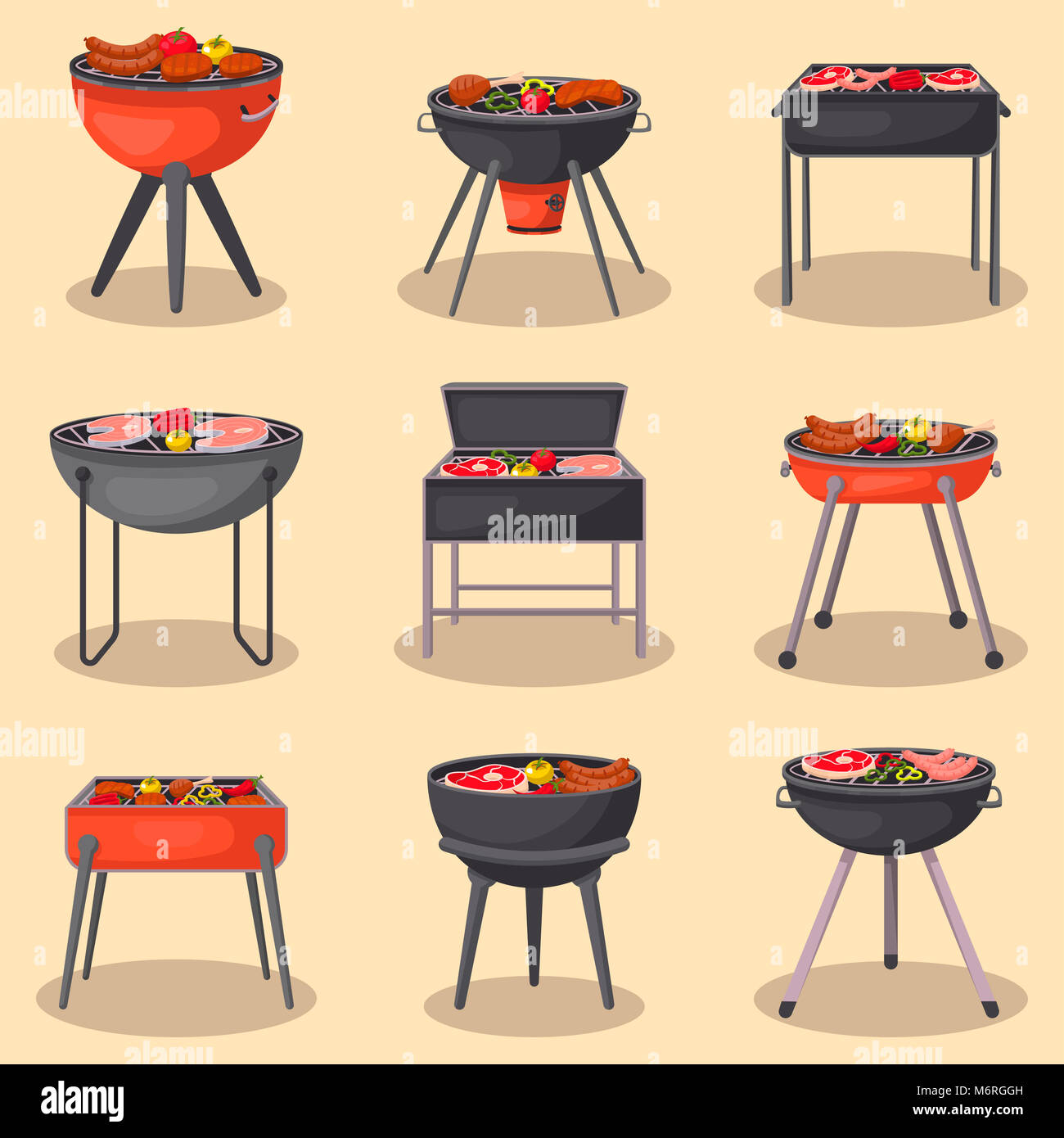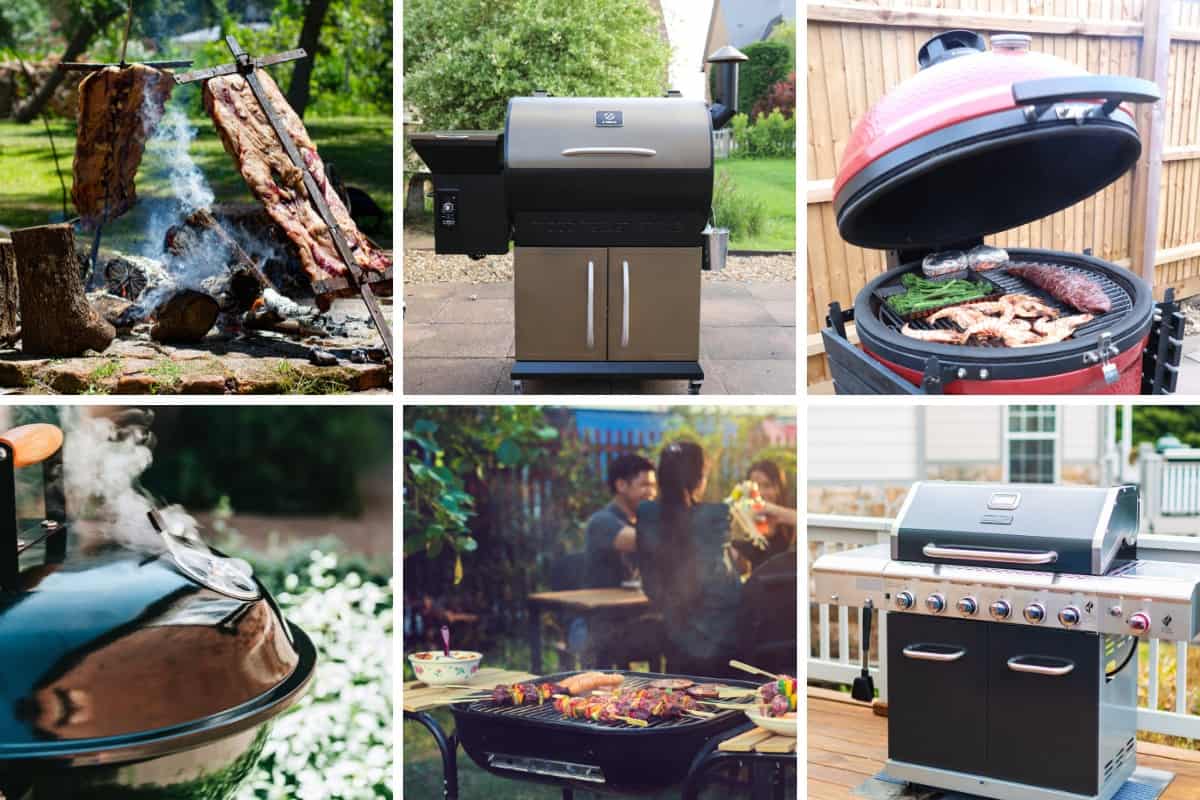Outdoor cooking enthusiasts know that selecting the right grill can elevate their culinary experience by blending flavor, ease, and adaptability. With numerous grill types on the market, each brings unique features and advantages to meet various cooking preferences and needs. This guide explores the diverse grill options, highlighting their characteristics, strengths, and limitations. Knowing these distinctions can help you make an informed choice for your outdoor grilling setup.
Charcoal Grills: The Classic Choice
Charcoal grills remain a timeless favorite, valued for delivering an authentic, smoky flavor that grilling purists love. Powered by charcoal briquettes or lump charcoal, these grills generate intense heat, adding a distinctive taste that other grill types may struggle to replicate.
Benefits of Charcoal Grills
- Rich Flavor: The smoky, aromatic flavor charcoal grills impart is often unmatched, especially for meat dishes.
- High Temperature: Capable of reaching high temperatures, charcoal grills are perfect for searing steaks and other cuts.
- Portability: Many charcoal models are portable, ideal for camping, tailgates, or limited outdoor spaces.
- Affordability: Generally, charcoal grills are more budget-friendly than other options.
Drawbacks of Charcoal Grills
- Extended Preheat Time: Heating can take 20–40 minutes, so it requires more patience.
- Cleanup: Dealing with ash and used charcoal can be messy.
- Temperature Control: Achieving precise temperatures can be challenging with charcoal grills.
Gas Grills: Efficiency and Ease
Gas grills are popular for those prioritizing convenience and control. Fueled by propane or natural gas, they ignite quickly and offer adjustable heat settings, making them straightforward and versatile.
Benefits of Gas Grills
- Simple to Use: Gas grills ignite with a button press, ready to cook in minutes, without waiting for coals.
- Precise Temperature Control: Adjustable knobs let you fine-tune temperatures easily.
- Low Mess: Gas grills produce less ash and smoke, simplifying cleanup.
- Additional Features: Many models include side burners, rotisseries, or griddles, expanding cooking possibilities.
Drawbacks of Gas Grills
- Flavor Limitations: While efficient, gas grills lack the depth of smoky flavor typical of charcoal grills.
- Higher Cost: Especially for natural gas models, gas grills tend to have a higher upfront cost.
- Fuel Dependency: Requires propane or a gas line, which can restrict portability.

Electric Grills: Perfect for Indoor or Restricted Areas
Ideal for apartment dwellers or locations with fire restrictions, electric grills use heating elements powered by electricity, making them suitable for both indoor and outdoor use.
Benefits of Electric Grills
- Convenience: Simply plug in, and you’re ready to cook; electric grills heat up fast.
- Indoor/Outdoor Versatility: These grills can be used indoors, allowing year-round grilling.
- Compact Design: Often small and portable, electric grills fit well in tight spaces.
Drawbacks of Electric Grills
- Less Flavor: They generally don’t produce the smoky flavor typical of charcoal or gas grills.
- Limited Heat: Electric grills don’t achieve the high temperatures ideal for searing.
- Electricity Requirement: Dependent on a power source, making them unsuitable for remote areas without electricity.
Pellet Grills: Combining Flavor and Modern Tech
Pellet grills blend wood-fired flavor with the convenience of automatic, digital control. These grills burn wood pellets, offering consistent heat and an easy-to-adjust temperature system.
Benefits of Pellet Grills
- Enhanced Flavor: Wood pellets produce a rich, smoky taste, much like charcoal.
- Precise Temperature Control: Digital controls enable exact temperature settings.
- Versatility: With options to smoke, bake, roast, or grill, pellet grills are highly adaptable.
Drawbacks of Pellet Grills
- Costly: Typically more expensive than both charcoal and gas options.
- Electricity Requirement: The digital controls and feeding system require a power outlet.
- Maintenance: Regular upkeep, including cleaning the pellet hopper and auger, is necessary.

Kamado Grills: Efficient and Versatile
Kamado grills, known for their excellent heat retention, are made of ceramic and are adaptable for grilling, smoking, and even baking. Using charcoal, Kamado grills provide consistent heat control.
Benefits of Kamado Grills
- Superior Heat Retention: Thick ceramic walls retain heat, ensuring even cooking.
- Efficient Fuel Use: Kamado grills use less charcoal, thanks to their insulation.
- Multiple Cooking Styles: With the ability to cook at various temperatures, you can grill, bake, smoke, or roast.
- Durable Design: High-quality ceramic materials make these grills long-lasting.
Drawbacks of Kamado Grills
- Higher Cost: Generally pricier than standard charcoal grills.
- Heavier Construction: Their ceramic build makes them less portable.
- Temperature Learning Curve: Mastering temperature control can require practice.
Portable Grills: For Grilling On-the-Go
Portable grills are ideal for those who love grilling at campsites, picnics, or tailgates. Lightweight and compact, these grills offer various fuel options, including charcoal, gas, and electric models.
Benefits of Portable Grills
- Easy to Transport: Lightweight and compact, these grills are designed for travel.
- Fuel Flexibility: Available in multiple fuel types to suit different needs.
- Affordable: Portable grills are generally more budget-friendly.
Drawbacks of Portable Grills
- Limited Cooking Space: Smaller size means less cooking area, which may not be suitable for larger gatherings.
- Temperature Control: Smaller models may lack precise heat control.
Conclusion
Selecting the ideal grill depends on your cooking style, lifestyle, and available outdoor space. Whether you’re drawn to the classic smoky taste of a charcoal grill, the convenience of gas, the versatility of a pellet grill, or the ease of a portable option, there’s a grill to match every preference. By understanding the unique benefits and considerations of each type, you can choose a grill that suits your needs and enhances your outdoor cooking experience every time.
